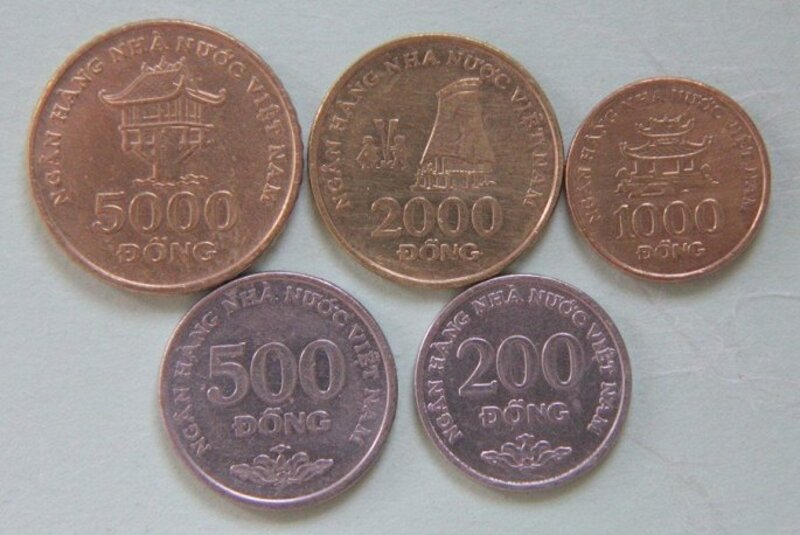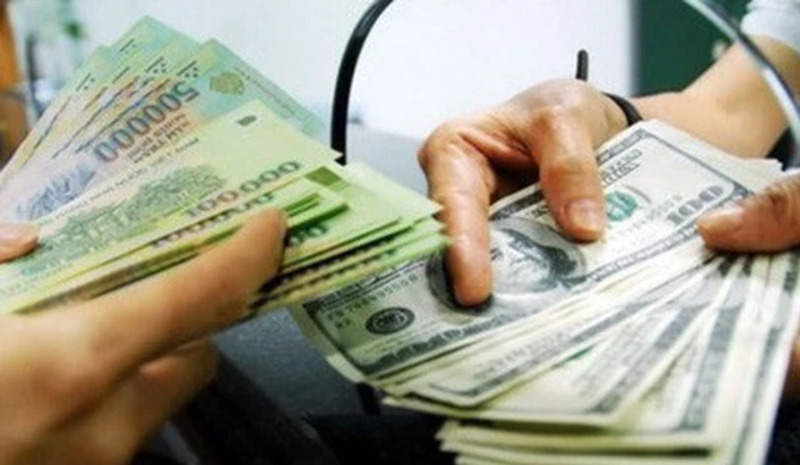Money in Vietnam: Exchange Rates, How to Distinguish Correctly
Vietnam is a beautiful country with magnificent natural landscapes, a unique culture, and a rich national identity. However, when traveling in Vietnam, many international tourists face significant difficulties in using and distinguishing Vietnamese currency. Therefore, Vietnam Motorbike Tours will help you compare exchange rates and accurately differentiate between Vietnamese denominations through the article below.
Overview of Vietnamese currency (VND)
Tourists visiting Vietnam may be overwhelmed by the denominations of Vietnamese currency, as the values can be quite large, ranging from a few thousand to several hundred thousand. The Vietnamese dong (VND) is the official currency of Vietnam and comes in polymer banknotes, cotton banknotes, and coins. Each type of currency has its own distinct features and is used in different situations.
Polymer banknotes
Polymer banknotes are a type of money made from polymer plastic, which is more durable than traditional paper money. This type of money is water-resistant, tear-resistant, and wrinkle-resistant, helping to extend the lifespan of the currency. Polymer banknotes are also easier to recognize thanks to security features such as watermarks, barcodes, and other intricate details.

Face value of Polymer banknotes
Vietnamese polymer banknotes are issued in various denominations, including:
- 500,000 VND: This is the highest denomination in circulation, with a dark purple-blue color. The front features a portrait of President Ho Chi Minh and modern decorative patterns. The back depicts the Hue Imperial Citadel historical site.
- 200,000 VND: This denomination has a purple-red color. The front features a portrait of President Ho Chi Minh and decorative patterns. The back depicts the Trang An Scenic Landscape Complex.
- 100,000 VND: This is a common denomination, with a green color. The front features a portrait of President Ho Chi Minh and decorative patterns. The back depicts Ha Long Bay.
- 50,000 VND: This denomination has an orange color. The front features a portrait of President Ho Chi Minh and decorative patterns. The back depicts the My Son Sanctuary.
- 20,000 VND: This denomination has a yellow color. The front features a portrait of President Ho Chi Minh and decorative patterns. The back depicts the Thang Long Imperial Citadel.
- 10,000 VND: This denomination has a dark brown color on a yellow-green background. The front features a portrait of President Ho Chi Minh and decorative patterns. The back depicts ethnic patterns and modern mesh designs.
Each denomination has its own images and patterns, reflecting the culture and history of the country.
Cotton money
Cotton money is a type of low-denomination paper currency in Vietnam, currently still in circulation and widely used. The denominations include: 100 đồng, 200 đồng, 500 đồng, 1,000 đồng, 2,000 đồng, 5,000 đồng, 10,000 đồng, 20,000 đồng, 50,000 đồng, and 100,000 đồng. Each denomination has its own distinct design characteristics, reflecting the rich culture of Vietnam.

Coin
Coins in Vietnam still hold value but are not widely circulated or popular. Therefore, when you come to Vietnam, you shouldn’t exchange your money for coins. The denominations of Vietnamese coins include:
- 200 đồng
- 500 đồng
- 1,000 đồng

Instructions on distinguishing between 20,000 VND and 500,000 VND coins
Distinguishing between different types of Polymer banknotes can be challenging for those who are unfamiliar with them, especially the 20,000 VND and 500,000 VND notes. Here are some tips to help you differentiate between easily confused Polymer banknotes in Vietnam.
| Factor | 20,000 VND | 500,000 VND |
| Color | Blue | Green and dark blue |
| Size | Smaller than the 500,000 VND note | Largest among the banknotes |
| Portrait and Image | Image of the Japanese Covered Bridge in Hoi An | Portrait of President Ho Chi Minh (both sides) and Ho Chi Minh’s house in Sen Village. |
To distinguish between the 20,000 VND and 500,000 VND banknotes, you can rely on three factors: color, size, and images. The 20,000 VND note is blue, smaller in size, and features the image of the Cau Pagoda. In contrast, the 500,000 VND note is green with a purple background, is the largest in size among the notes, and displays the image of Ho Chi Minh’s house in Sen Village.


Update Vietnamese currency exchange rates compared to other currencies
The exchange rate between the Vietnamese Dong and other currencies frequently fluctuates, depending on various factors such as economic conditions, political situations, and international financial markets. Below is some updated information on the exchange rate of the Vietnamese Dong compared to commonly used currencies.
USD to Vietnam Dong
The USD/VND exchange rate is one of the most important rates in international transactions. Currently, the exchange rate for USD to Vietnamese Dong fluctuates between approximately 23,000 and 24,000 VND per USD. This rate can change over time and depends on various factors such as interest rates, economic conditions, and political situations.

EUR to Vietnam Dong
The EUR/VND exchange rate is also a notable exchange rate, especially for those working and living in Europe. Currently, the exchange rate of EUR to Vietnamese Dong fluctuates around 25,000 – 27,000 VND for 1 EUR. Similar to the USD exchange rate, this exchange rate can also change from time to time.
Yuan to Vietnam Dong
The EUR/VND exchange rate is also noteworthy, especially for those working and living in Europe. Currently, the exchange rate from EUR to Vietnamese Dong ranges from about 25,000 to 27,000 VND per EUR. Similar to the USD exchange rate, this rate can also fluctuate over time.
Japanese Yen to Vietnam Dong
Japanese Yen (JPY) is also one of the commonly traded currencies in Vietnam. The exchange rate of Japanese Yen to Vietnamese Dong currently fluctuates around 200 – 220 VND per 1 JPY. This rate can also change depending on the time and the economic situation in Japan.
Places to exchange money to Vietnamese Dong
When you need to exchange money for Vietnamese Dong, you can go to various locations. Below are some popular places for currency exchange.
Bank
Banks are always the top choice when you want to exchange money safely and reliably. With a branch network spread across the country, you can easily find a bank near your residence to conduct transactions. The biggest advantage of exchanging money at a bank is the guarantee of legality and safety. All transactions are carried out transparently, clearly, and in compliance with legal regulations.

Gold shop
Many gold shops also offer currency exchange services, especially for popular foreign currencies such as US dollars and euros. Here, you can often get better exchange rates compared to banks, especially when exchanging large amounts. However, to ensure safety and avoid risks, you should choose reputable gold shops with clear operating licenses. It is advisable to consult with family, friends, or search for information on forums and social networks to find reliable addresses. Additionally, you should compare exchange rates at various places before deciding to exchange money to get the best rate.
Free money exchange points
Besides banks and gold shops, free exchange points in tourist areas are also a popular option. These locations often offer attractive exchange rates, drawing many tourists. However, exchanging money here also carries risks. Not all exchange points are reputable, and you might encounter counterfeit money or be charged excessively. Therefore, before making a transaction, research the exchange point thoroughly, compare rates with other places, and carefully check the money after receiving it to ensure you are not scammed.
Conclude
Vietnamese currency is not just a unit of money but also a symbol of the country’s culture and history. Understanding Vietnamese currency, its different types, how to distinguish them, and the exchange rates with other currencies will help you make informed decisions in your daily transactions. We hope this article has provided you with useful and necessary information about Vietname Motorcycle Tours.
Contact us for more interesting information
- Address: 3/7/36 Duy Tan Street, Cau Giay District, Ha Noi City
- Mobile: +84 976 024 986
- Email: [email protected]
- Website: https://vietnammotorbiketoursclub.com/
RELATED POSTS

Ha Giang terraced fields – Artistic masterpiece of workers
One of the most beautiful landscapes that Ha Giang possesses is the terraced fields in Hoang Su Phi, especially when the rice is ripe, these...

Autumn in Hanoi and things to experience when visiting
Autumn in Hanoi makes people’s hearts flutter, with the streets full of fallen yellow leaves, cold weather, and a little drizzle. Autumn comes to Hanoi,...

Northern Vietnamese Cuisine – The Quintessence of Vietnamese Culture
Cuisine is a natural cultural feature formed in life, when mentioning Northern Vietnamese cuisine, it is not difficult to recognize the light, delicate flavor and...




